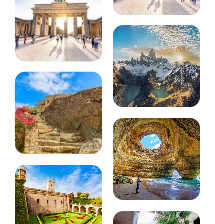Discover the Spanish Basque Country in 10 must-sees
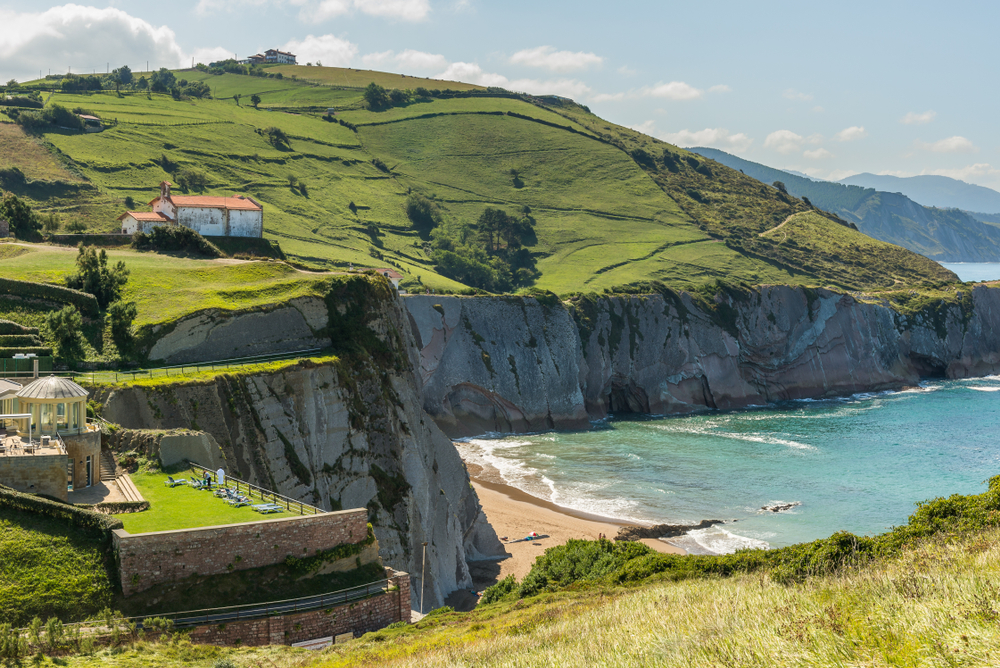
The Spanish Basque Country, or Euskadi, is a fascinating destination that brilliantly combines age-old traditions and bold modernity. From the jagged coastline of the Bay of Biscay to picturesque fishing villages and avant-garde towns, this region of northern Spain offers exceptional diversity. Whether you’re a lover of contemporary art, gastronomy, wilderness or Basque culture, Euskadi has something for everyone. From Bilbao and its famous Guggenheim Museum to San Sebastián and its golden beaches, via the spectacular monastery of Gaztelugatxe, discover our selection of the 10 must-do things to do to visit the Spanish Basque Country and enjoy an authentic experience at the heart of this land of character.
200 audioguided tours for cities all around the world
DownloadSee also the Bilbao guide :
- Top 5 best hotels to stay in Bilbao
- Top 6 things to do in Bilbao
- Top 10 most beautiful places to visit in Spain
- Top 6 of the best Spanish campsites by the sea
- Top 5 things to do in San Sebastian
1. Bilbao and the Guggenheim Museum
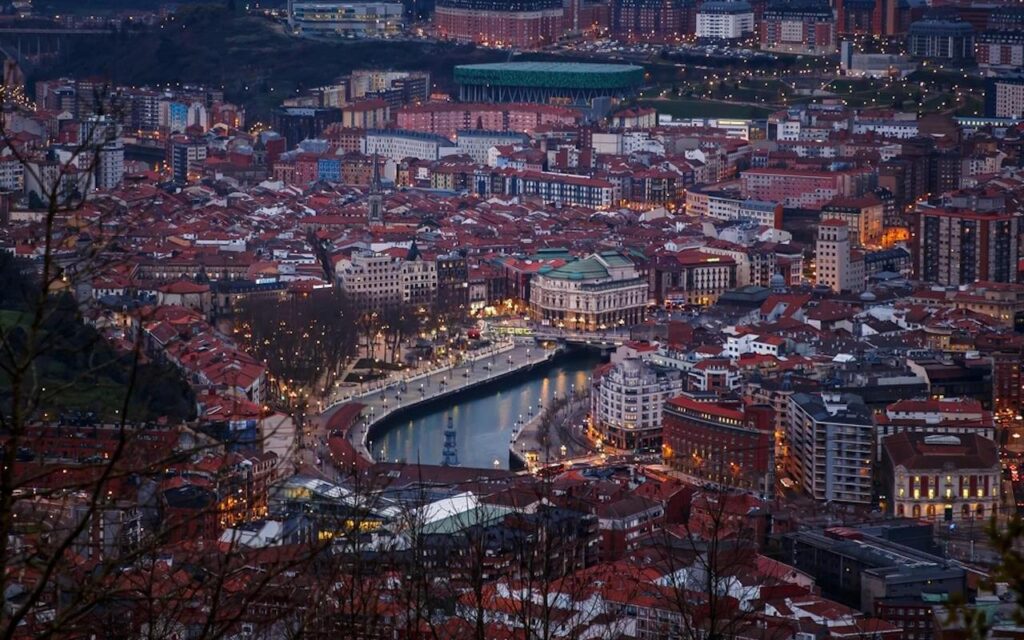
It’s impossible to visit Bilbao without being captivated by its Guggenheim Museum, a true architectural icon of the 21st century. Designed by architect Frank Gehry and inaugurated in 1997, this building with its titanic curves has literally transformed the economic capital of the Spanish Basque Country. Its organic forms, covered in titanium panels, sparkle in the sunlight and create a fascinating play of light with the waters of the Ría de Bilbao. Inside, collections of contemporary and modern art rival the spectacular architecture of the galleries.
But there’s more to Bilbao than its star museum. The Casco Viejo, the historic quarter, offers a maze of cobbled streets lined with pintxo bars where a friendly atmosphere reigns. The Seven Streets (Las Siete Calles) form the medieval heart of the city, along with Santiago Cathedral and Plaza Nueva. For those who want to explore Bilbao in greater depth, theNavaway audioguide route allows you to explore all the city’s hidden treasures, from the Arriaga theatre to the Ribera market and the Zubizuri bridge. Download the tour to discover Bilbao on foot and enjoy a complete visit with 21 points of interest with commentary.
2. San Sebastián, the pearl of the Cantabrian Sea
Elegant and refined, San Sebastián (Donostia in Basque) is the perfect embodiment of the Basque art of living. Nestling in one of the most beautiful bays in the world, the Bay of La Concha, this chic seaside resort has been attracting royalty and aristocrats since the Belle Époque. Its shell-shaped beach, lined with an elegant promenade and dominated by Mount Urgull, offers an unforgettable panorama. In summer, Zurriola beach attracts surfers from all over the world with its renowned waves.
The historic centre of San Sebastián, the Parte Vieja, is a gourmet’s paradise. In its lively alleyways, you’ll find one pintxo bar after another, offering veritable works of culinary art. In fact, the city has the highest number of Michelin stars per capita in the world! Don’t miss the Plaza de la Constitución with its numbered balconies, a remnant of the time when the square was used as a bullring. The San Sebastián Aquarium and the San Telmo Museum are the perfect complement to a cultural visit. To get the most out of your visit, take theaudio-guided route through 26 of the city’s most emblematic sites, from Mount Urgull to the Paseo Nuevo. Discover the self-guided tour of San Sebastián and immerse yourself in the unique atmosphere of this Basque gem.
3. The monastery of San Juan de Gaztelugatxe
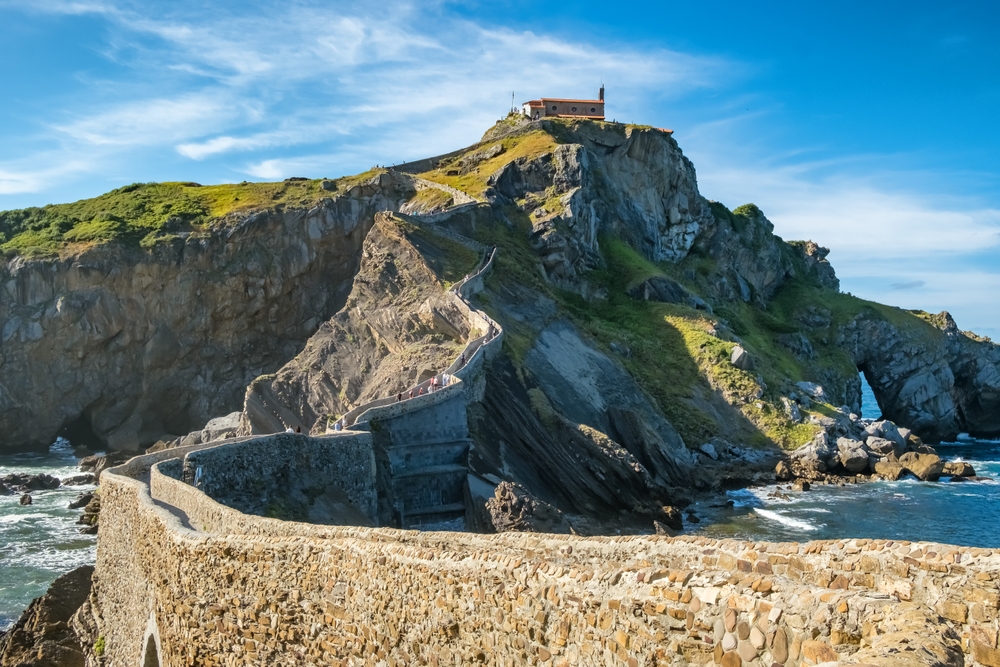
A true natural and architectural gem, the monastery of San Juan de Gaztelugatxe is one of the most spectacular sites in the Spanish Basque Country. Perched on a rocky islet linked to the coast by a narrow, winding stone bridge, this small 10th-century hermitage can be reached after climbing 241 steps. The climb is rewarded with breathtaking views of the sheer cliffs and the raging Atlantic Ocean. Fans of Game of Thrones will recognise Peyredragon (Dragonstone), Daenerys Targaryen’s fortress.
Beyond its photogenic beauty, Gaztelugatxe has a profound spiritual dimension. According to Basque tradition, after ringing the hermitage bell three times, you can make a vow. The site is also home to a unique marine biodiversity endemic to the Bay of Biscay. To preserve this fragile site, access is now regulated and free online booking is compulsory in high season. Bring good shoes and water, as the walk requires a minimum of physical effort.
4. Hondarribia, a medieval jewel by the sea
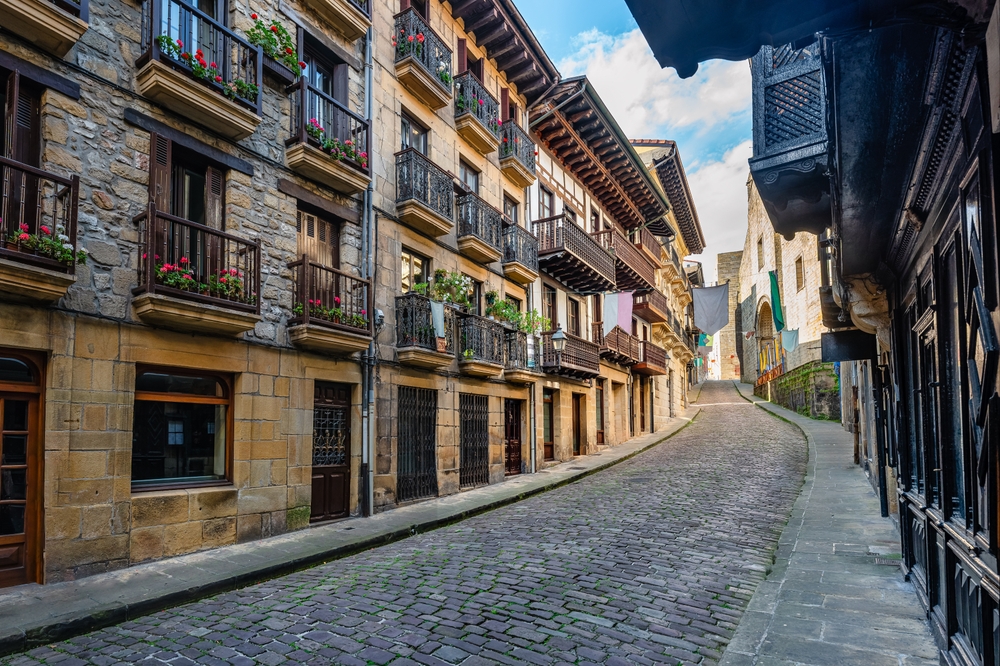
Just a few minutes from the French border, Hondarribia (Fontarrabie in French) is an enchantment for those who love villages with character. Its historic medieval centre, surrounded by imposing ramparts, boasts colourful houses with flower-filled balconies and cobbled streets that climb up to Charles V’s castle, now transformed into a Parador. The Calle Mayor, the main thoroughfare in the walled quarter, is home to a wealth of craft shops and authentic restaurants.
The contrast between the hilltop old town and the waterside Marina district is striking. This fishermen’s quarter preserves an authentic maritime atmosphere with its multicoloured facades and lively terraces. At the end of the day, the locals gather for the traditional paseo and a round of pintxos in the many bars. Hondarribia beach, a long stretch of fine sand, offers magnificent views of the French coast. The marina and the mouth of the River Bidasoa complete the picture of a destination where history and the good life go hand in hand.
5. Guernica, a symbol of peace and remembrance
Guernica (Gernika in Basque) went down in world history on 26 April 1937, the day the town was bombed by the Nazi air force working for Franco. This tragic event inspired Picasso to paint his most famous work, which has become a universal symbol against the horrors of war. Today, Guernica has risen again and is dedicated to remembrance and peace. The Musée de la Paix (Gernika Peace Museum) provides a moving account of the events of 1937 and offers an in-depth reflection on conflict and reconciliation.
Beyond its memorial dimension, Guernica has major political importance for the Basques. It is under its mythical tree, the Gernikako Arbola, that Basque assemblies have traditionally met since the Middle Ages. This thousand-year-old oak, a symbol of Basque freedoms, is enthroned in front of the Casa de Juntas. Every Monday, a traditional market brings the town centre to life, perpetuating a centuries-old tradition. A visit to Guernica offers an insight into the recent history of the Spanish Basque Country and its values of democracy and peace.
6. The Iraty forest, a cross-border natural treasure
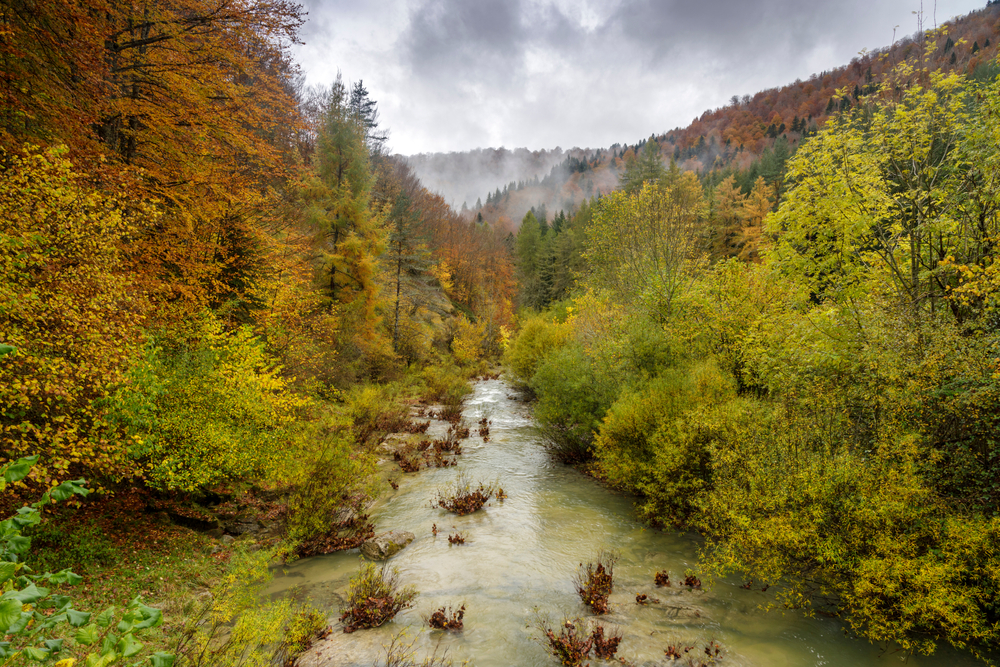
Straddling the border between France and Spain, the Iraty forest is the largest beech forest in Western Europe, covering more than 17,000 hectares. This green lung of the Pyrenees offers a complete change of scenery, with its mysterious undergrowth, fern-strewn clearings and herds of Latxa sheep grazing freely. Autumn transforms the forest into a spectacular palette of reds and golds, while winter adorns it in a white coat perfect for snowshoe trekking.
The Iraty area is also a Mecca for Basque pastoralists. Here, shepherds perpetuate age-old traditions in stone huts known as cayolar or etxola. At the chalet in Cizen, an interpretation centre explains this ancestral way of life and the history of transhumance. Numerous hiking trails criss-cross the forest, from the GR10 to family walks around the Iraty plateau. The panoramic road that crosses the massif offers breathtaking views of the Pyrenees. A haven of peace for lovers of authentic, unspoilt nature.
7. Coastal villages: Getaria, Zarautz and Lekeitio
The Spanish Basque coast is dotted with fishing villages that have managed to preserve their authenticity. Getaria, the birthplace of navigator Juan Sebastián Elcano (the first man to circumnavigate the globe) and fashion designer Balenciaga, is built on a small rocky peninsula that gives it the appearance of an island. Its medieval streets lead down to the fishing port, where you can sample the famous txakoli, a lightly sparkling white wine produced on the surrounding hills. The Balenciaga museum, with its spectacular contemporary architecture, pays tribute to the master of haute couture.
Zarautz stands out for its beach, the longest in the Spanish Basque Country at 2.5 kilometres of fine sand. This renowned spot attracts surfers and families in search of idleness. Further west, Lekeitio has a picturesque harbour dominated by the Gothic basilica of Santa María. The islet of San Nicolás, accessible at low tide, adds a magical touch to the landscape. These villages perpetuate Basque maritime traditions while developing tourism that respects their identity. Take a stroll through the narrow streets and sample the freshly caught seafood.
8. Urdaibai Biosphere Reserve
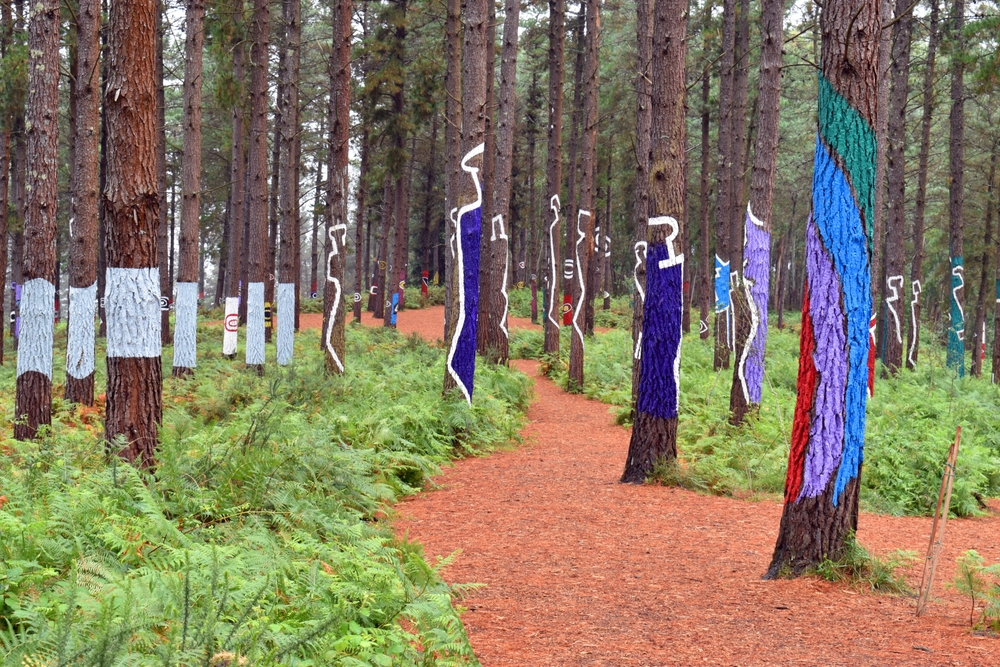
Classified as a biosphere reserve by UNESCO in 1984, Urdaibai is an exceptional natural setting where the River Oka forms an unspoilt estuary before flowing into the Bay of Biscay. This 22,000-hectare wetland is home to remarkable biodiversity, with more than 250 species of bird calling here on their migrations, much to the delight of ornithologists. The lush green cliffs plunge into the ocean, offering breathtaking views of the jagged coastline. The wild beaches of Laga and Laida are among the most beautiful in the Spanish Basque Country.
At the heart of the reserve, the village of Mundaka is world-famous for its left-hand wave, considered to be one of the best in Europe for surfing. The natural phenomenon created by the mouth of the river generates spectacular tubes that attract professional surfers. The fishing villages of Bermeo and Elantxobe dot the coastline, while the Santimamiñe caves bear witness to 14,000 years of human presence with their cave paintings. Between land and sea, Urdaibai offers an exceptional playground for outdoor activities: hiking, kayaking, mountain biking or simply contemplating the breathtaking scenery.
9. Vitoria-Gasteiz, the green capital of the Basque Country
The administrative capital of the Basque Autonomous Community, Vitoria-Gasteiz (Gasteiz in Basque) stands out for its exemplary urban planning, which earned it the title of European Green Capital in 2012. The city boasts an Anillo Verde, a green belt of parks that surrounds the city and offers more than 30 kilometres of cycle paths. The Salburua park, with its wetlands, is home to deer, wild horses and many species of birds, just a few minutes from the city centre.
The perfectly preserved medieval heart of Vitoria-Gasteiz stretches out in an almond shape around Santa María Cathedral. This Gothic cathedral is the subject of a restoration programme that is unique in the world: visitors can see the building in progress and learn about medieval construction techniques. The Plaza de la Virgen Blanca, with its colourful balconies, is the nerve centre where the main festivities take place. The Artium Museum of Contemporary Art and the Museum of Fine Arts add to the cultural offering of a city that harmoniously combines its historical heritage with a contemporary quality of life.
10. Mountain villages and the Zumaia flysch
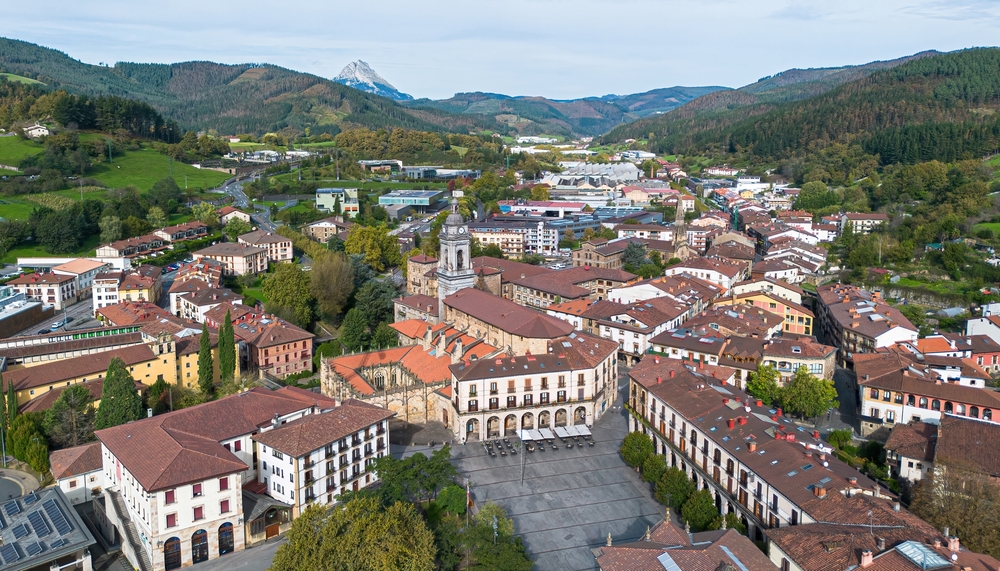
As well as the top destinations, the Spanish Basque Country also has some lesser-known nuggets that are well worth a visit. Mountain villages such as Oñati, nicknamed the “little Basque Toledo” for its exceptional Renaissance heritage, offer a plunge into history. The University of Sancti Spiritus in Oñati, a 16th-century masterpiece, and the Arantzazu sanctuary, built in the 1950s by avant-garde artists, illustrate the architectural wealth of the region.
On the coast, the village of Zumaia is home to one of Europe’s most fascinating geological phenomena: flysch. These sloping rock strata, like pages in a giant book, tell the story of 60 million years of Earth history. At low tide, Itzurun beach reveals this unique spectacle of alternating dark layers of clay and light bands of limestone. The coastal path allows you to admire these spectacular formations, which extend as far as Deba. The small port of Zumaia, with its fishermen’s cottages and excellent restaurants, completes the picture of a destination where nature and heritage are in constant dialogue.
In conclusion, a visit to the Spanish Basque Country means discovering a region with a strong character, where thousand-year-old Basque culture is combined with a bold modernity. From the futuristic silhouette of the Guggenheim Museum in Bilbao to the unspoilt coastal villages, from the golden beaches of San Sebastián to the mysterious forests of Iraty, every corner of the Basque Country is full of surprises and emotions. The exceptional gastronomy, the varied landscapes between sea and mountains, and the warmth of the Basque welcome turn every visit into an unforgettable experience. Whether you spend a few days or several weeks exploring this land of contrasts, let the Navaway itinerary be your guide to ensure you don’t miss out on any of the hidden treasures of this fascinating region. Download the audio tours and discover the Basque soul, with its blend of ancient traditions and contemporary innovations.
Frequently asked questions about the Spanish Basque Country
When is the best time to visit the Spanish Basque Country?
The best period is from May to October, with a preference for June and September, which offer a pleasant climate and fewer tourists. Summer (July-August) is ideal for enjoying the beaches, but more crowded. Spring reveals spectacular green countryside.
How many days does it take to visit the Spanish Basque Country?
A stay of 4 or 5 days allows you to discover the essentials: Bilbao, San Sebastián and Gaztelugatxe. For a more complete exploration, including coastal villages, nature and the hinterland, allow 7 to 10 days. An extended weekend is enough to concentrate on one or two main destinations.
Do you need a car to visit the Spanish Basque Country?
The car offers the greatest freedom, particularly for exploring the coastal villages, Gaztelugatxe and the hinterland. However, major cities such as Bilbao and San Sebastián are easily visited on foot or by public transport. Buses run efficiently between the main tourist destinations.
Where to stay to visit the Spanish Basque Country?
Bilbao and San Sebastián are excellent bases, with plenty of accommodation and a lively nightlife. For a more authentic holiday, opt for coastal villages such as Hondarribia or Getaria. Vitoria-Gasteiz is ideal for exploring the interior. Book in advance in high season.
Can you visit the Spanish Basque Country with children?
Absolutely! Beaches, the San Sebastián aquarium, the Bilbao funicular railway, easy hikes in the Iraty forest and picturesque villages will delight young and old alike. Pintxos are an easy way to sample the local gastronomy. There are plenty of family activities on offer, especially in summer.
200 audioguided tours for cities all around the world
Download